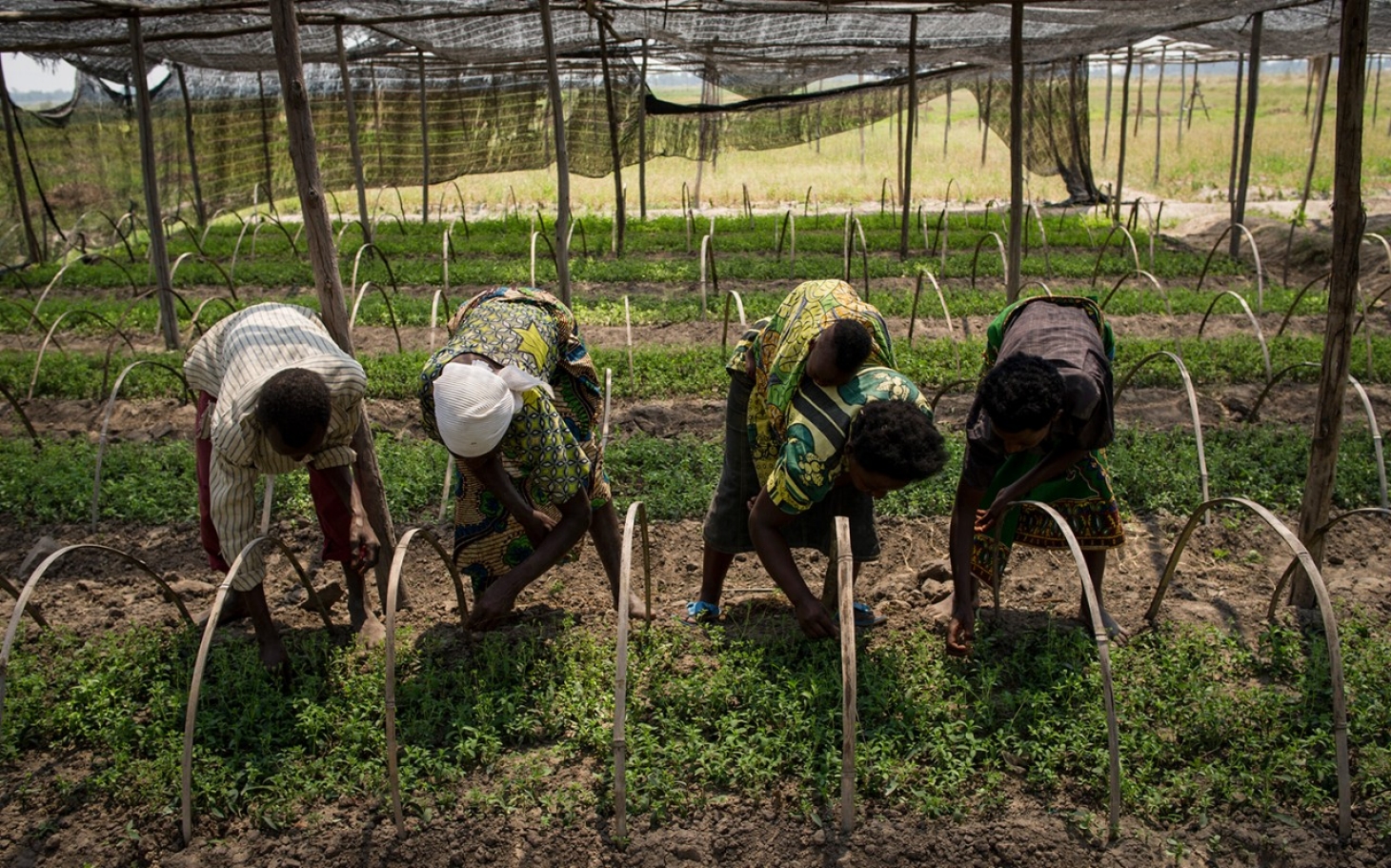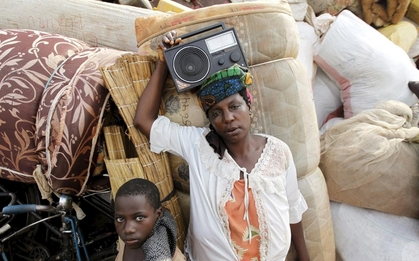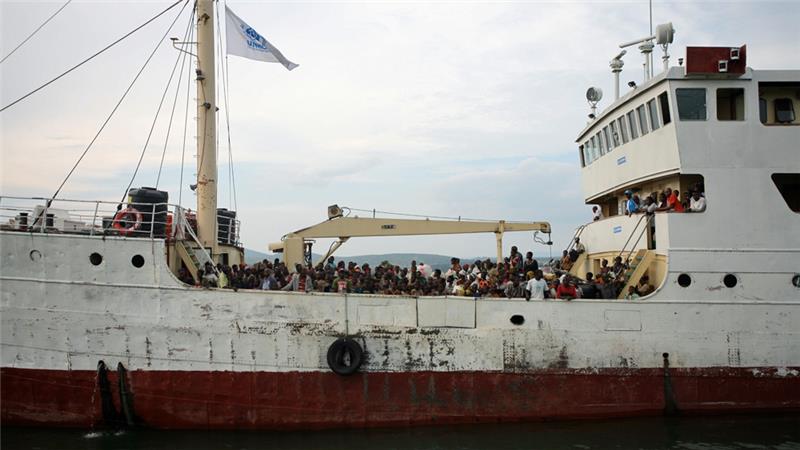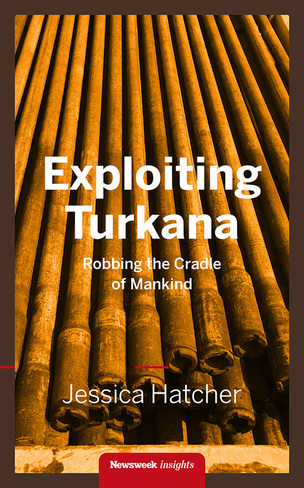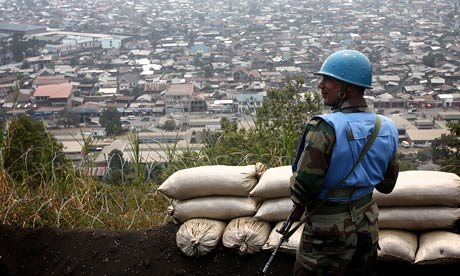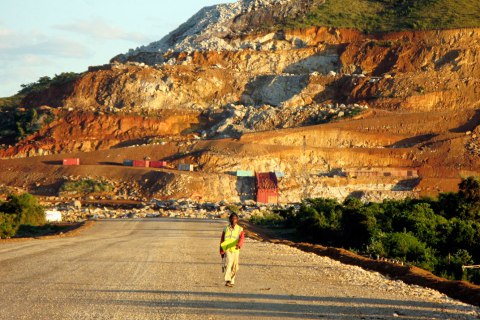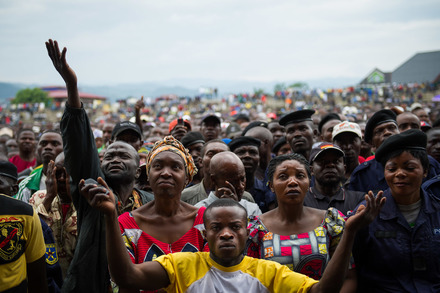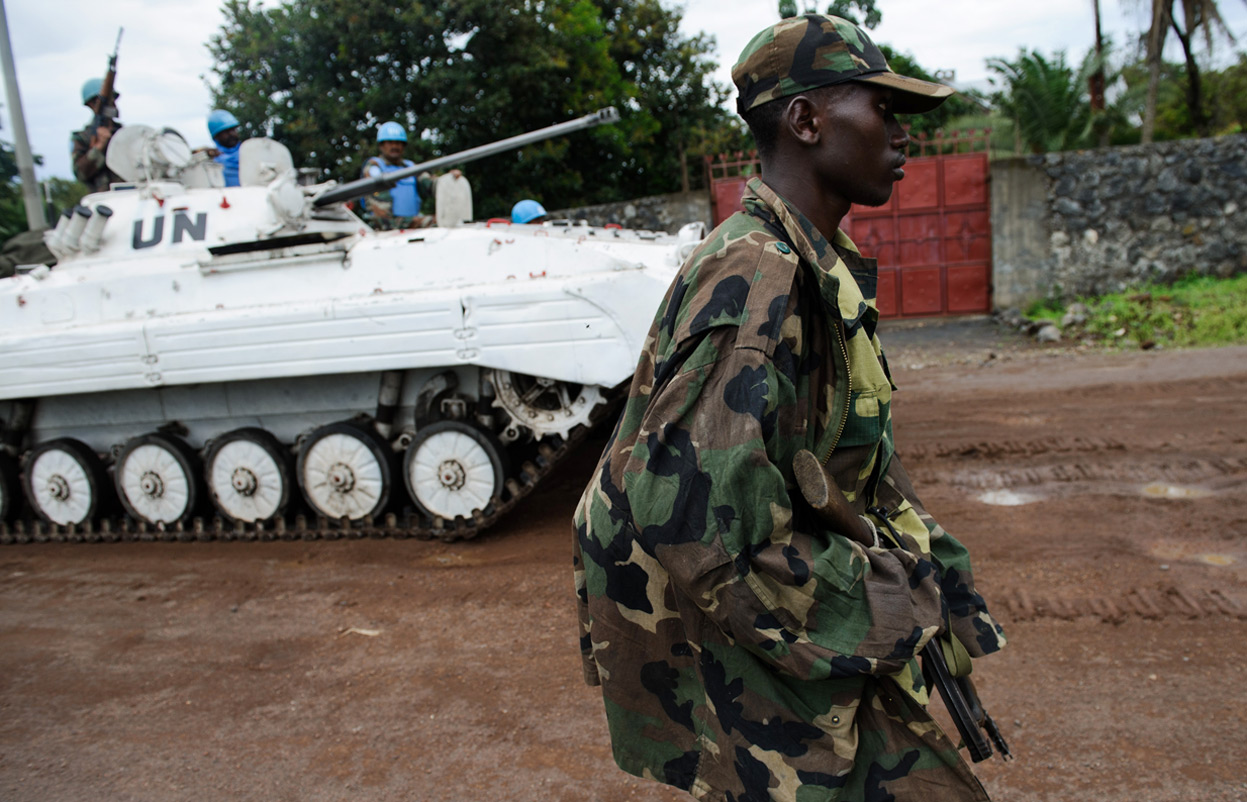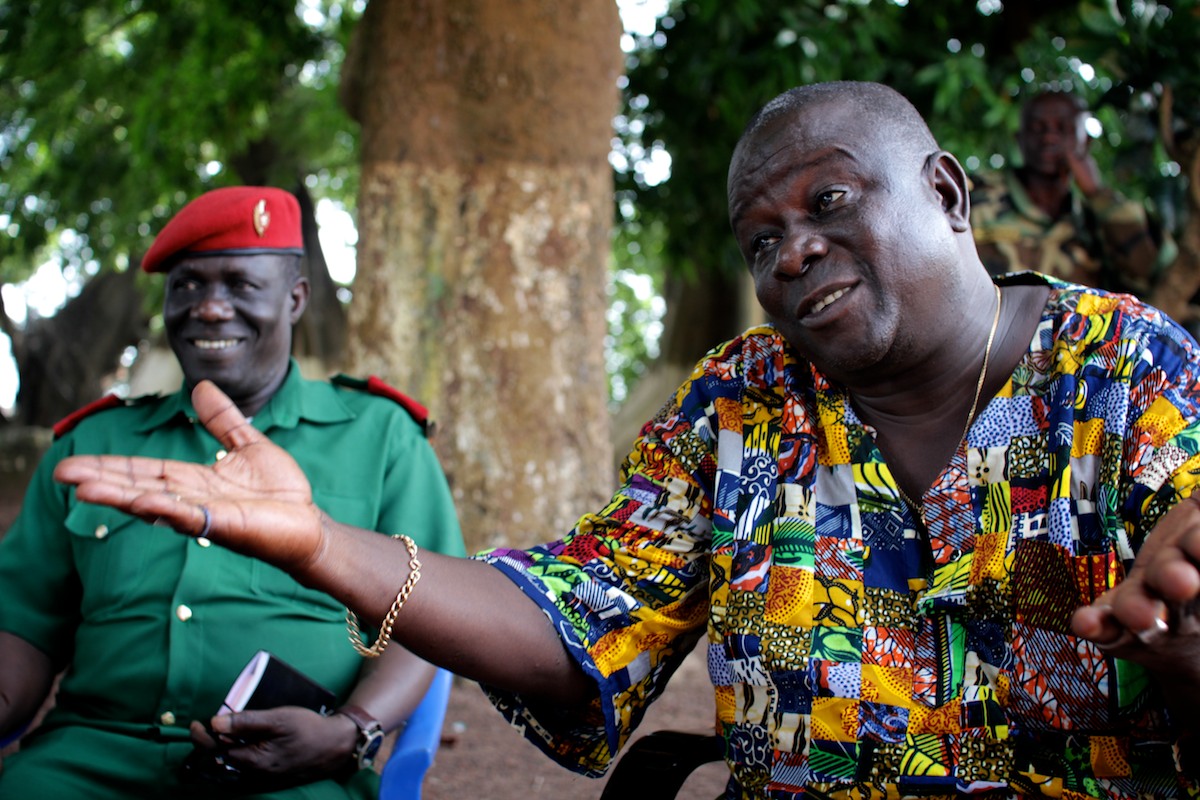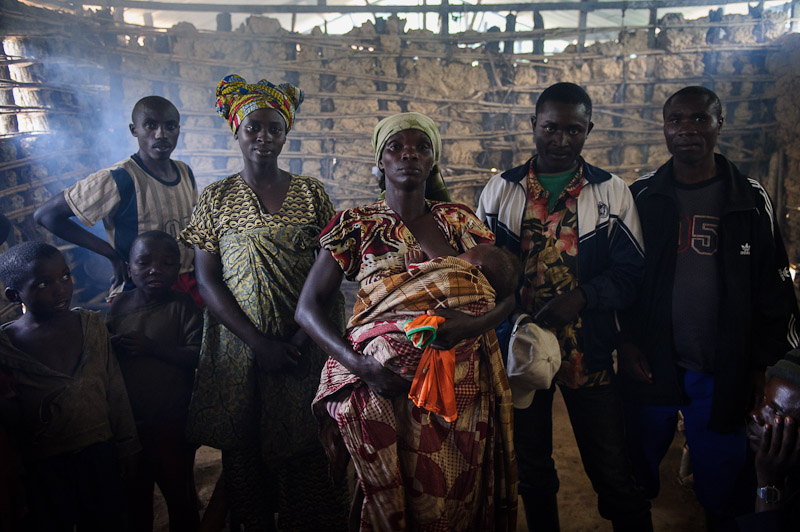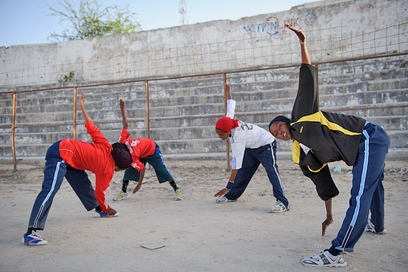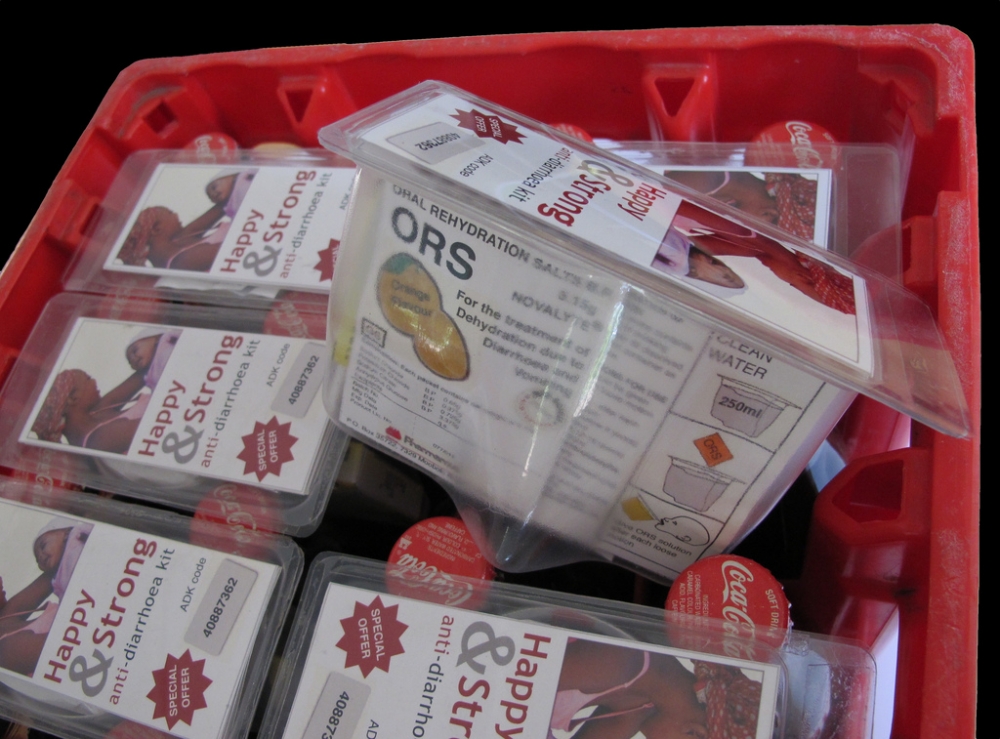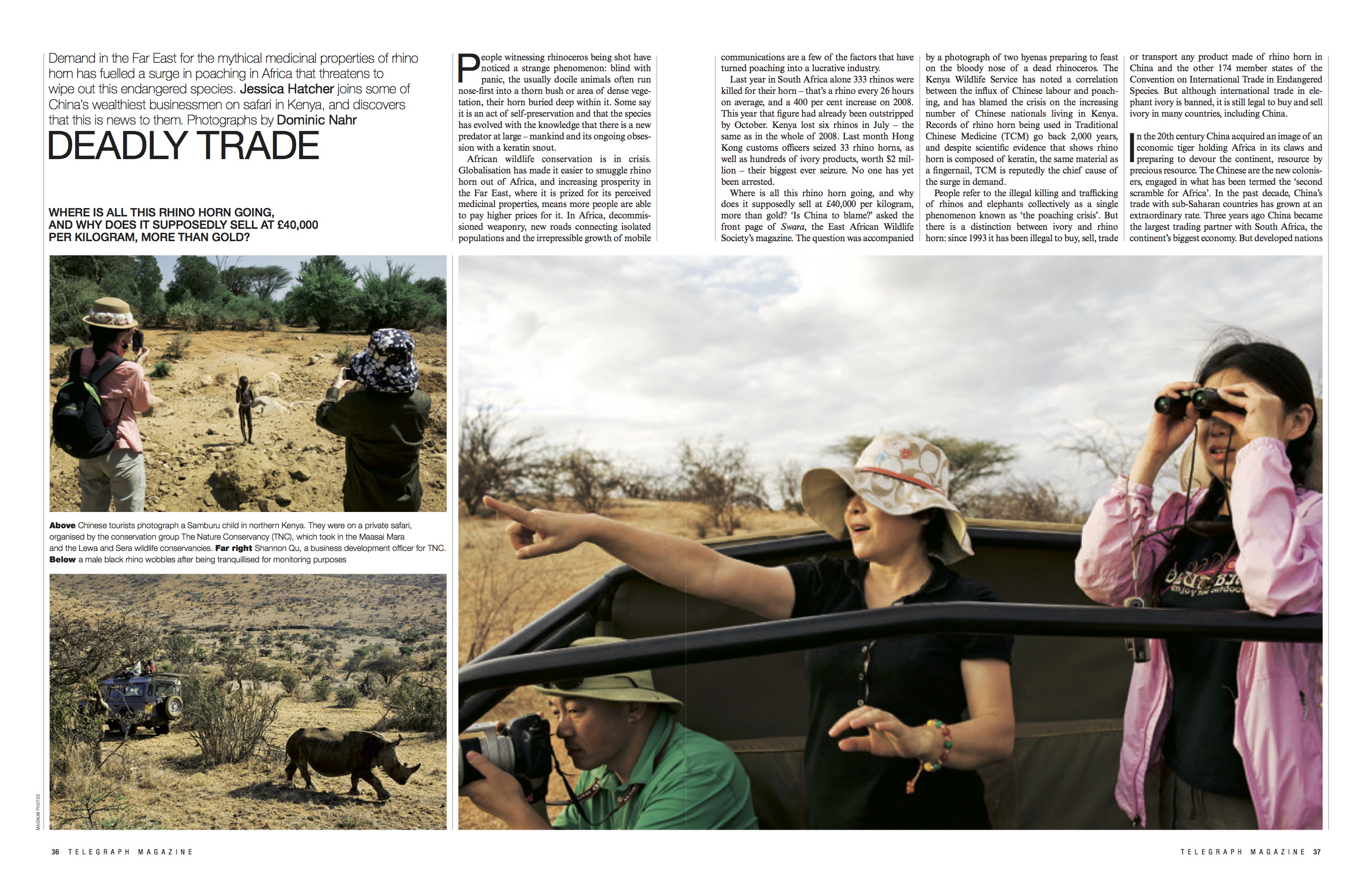The Big Squeeze: hold tight for a pelvic floor revolution
The Telegraph, June 2021
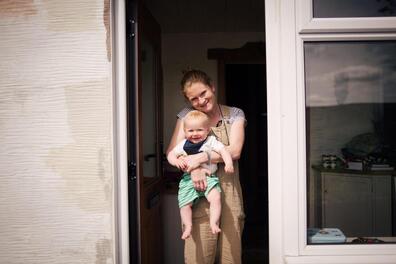
How’s your pelvic floor? For decades, this body part has been neglected and ignored, resulting in generations of women suffering with incontinence and other issues in squeamish silence. Now it’s enjoying a renaissance – with celebrities such as Kate Winslet speaking out about their experiences with pelvic floor dysfunction, and books, podcasts and revolutionary new products aiming to end the stigma and get us all lifting and lowering our way to better pelvic health and happiness.
Last week, the NHS announced that it is rolling out new clinics for pregnant women and new mothers to prevent and treat pelvic floor issues – following research showing that one in three women experiences urinary incontinence in the first year after having a baby and up to three-quarters of these women continue to experience symptoms in the following 12 years after giving birth.
If you’re one of the millions of women who’ve been unable to go near a trampoline since having children, you’ll know that this investment is long overdue...
To read the full article, click here or download the PDF:
Last week, the NHS announced that it is rolling out new clinics for pregnant women and new mothers to prevent and treat pelvic floor issues – following research showing that one in three women experiences urinary incontinence in the first year after having a baby and up to three-quarters of these women continue to experience symptoms in the following 12 years after giving birth.
If you’re one of the millions of women who’ve been unable to go near a trampoline since having children, you’ll know that this investment is long overdue...
To read the full article, click here or download the PDF:
| the_big_squeeze__hold_tight_for_a_pelvic_floor_revolution.pdf | |
| File Size: | 287 kb |
| File Type: | |
Night Swimming in Snowdonia – The Guardian, September 2019
Wild swimming in a lake, under the stars and dark skies of north Wales, is a bold and bracing escape from light pollution
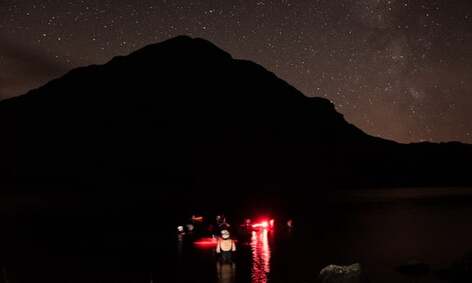
Llyn Cwm Bychan, a lake high in Snowdonia national park, looks black and forbidding even on a sunny day, so it’s perhaps a good thing I can’t see it right now. It’s 10.30pm and only the contours of the land are visible, jagged and black, against the starry sky – and I am going to swim.
Wild Swim Snowdonia was founded earlier this year by Laura Sanderson and Meg Pugh, who run a year-round swim group and also guide visitors to the park’s most unspoiled spots. They have teamed up with Dani Robertson, Snowdonia’s Dark Sky officer, to host free, late-night swims under the stars. Family-friendly swims take place after dark on Harlech’s long sandy beach and, later in the evening, there are adult-only swims in the mountain lakes above it.
This lake is a bold choice for their inaugural night swim; it feels as close to real wilderness as you can find in the UK. By day, dry-stone walls and flocks of sheep betray man’s dominion over the heather, bog, mossy rocks and gnarled oak trees. By night, traces of human intervention are swept away – and the absence of light pollution is arresting.
Beside a campfire, Dani tells our group of 10 that it takes 20 minutes for your eyes to fully adjust to the dark, but the light of the Milky Way is already beaming across the sky. The conditions are perfect, and the almost magical nature of what we are about to do fills me with anticipation...
To read the full article, click here.
Wild Swim Snowdonia was founded earlier this year by Laura Sanderson and Meg Pugh, who run a year-round swim group and also guide visitors to the park’s most unspoiled spots. They have teamed up with Dani Robertson, Snowdonia’s Dark Sky officer, to host free, late-night swims under the stars. Family-friendly swims take place after dark on Harlech’s long sandy beach and, later in the evening, there are adult-only swims in the mountain lakes above it.
This lake is a bold choice for their inaugural night swim; it feels as close to real wilderness as you can find in the UK. By day, dry-stone walls and flocks of sheep betray man’s dominion over the heather, bog, mossy rocks and gnarled oak trees. By night, traces of human intervention are swept away – and the absence of light pollution is arresting.
Beside a campfire, Dani tells our group of 10 that it takes 20 minutes for your eyes to fully adjust to the dark, but the light of the Milky Way is already beaming across the sky. The conditions are perfect, and the almost magical nature of what we are about to do fills me with anticipation...
To read the full article, click here.
The Berwyn Incident
They made an improbable duo of UFO hunters — a plump Miss Marple and a gun-toting gamekeeper. The true story of their long-odds mission to solve the “Roswell of Wales", published by Truly*Adventurous.

January 23, 1974
It was a cold, damp and moonless night in Llandrillo, a small village built around a broad stream at the base of the Berwyn Mountains in North Wales. The village postmaster was watching television with his wife when it felt like his house parted company from the foundations. The sodden earth beneath the village trembled and the grey slate houses shook as if Branwen the Giantess, a mythical goddess whose throne towered above the village, had risen again. Crockery flew off shelves and smashed onto flagstone floors. A deep rumbling accompanied the tremor, striking terror into the local community.
...
It was a cold, damp and moonless night in Llandrillo, a small village built around a broad stream at the base of the Berwyn Mountains in North Wales. The village postmaster was watching television with his wife when it felt like his house parted company from the foundations. The sodden earth beneath the village trembled and the grey slate houses shook as if Branwen the Giantess, a mythical goddess whose throne towered above the village, had risen again. Crockery flew off shelves and smashed onto flagstone floors. A deep rumbling accompanied the tremor, striking terror into the local community.
...
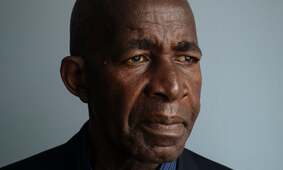
I was honoured to receive the 2017 Frontline Club Award for print journalism, for my Guardian Long Read, Murder in Burundi. I am forever indebted to the brave Burundians who shared their stories with me, and to my editor Claire for taking a punt on publishing 5,000 words about a country that most papers won't even give 200 words. Here's what the judges had to say about the piece:
"This is a remarkable piece of reportage about the fearful ways and means of the current Burundian president and his regime. It's also an amazingly well-told story, as chillingly suspenseful as it is persuasive. Beginning with the inexplicable murder of three elderly Italian nuns in 2014, Hatcher-Moore tells of how Burundi's most prominent human rights activist set about investigating the crimes and soon found a trail of evidence that led him to the presidential palace itself, after which he and his family also found themselves, not surprisingly, on the target list. Murder in Burundi is an example of journalism at its finest, proof of the power of the truth in the face of tyranny and injustice."
"This is a remarkable piece of reportage about the fearful ways and means of the current Burundian president and his regime. It's also an amazingly well-told story, as chillingly suspenseful as it is persuasive. Beginning with the inexplicable murder of three elderly Italian nuns in 2014, Hatcher-Moore tells of how Burundi's most prominent human rights activist set about investigating the crimes and soon found a trail of evidence that led him to the presidential palace itself, after which he and his family also found themselves, not surprisingly, on the target list. Murder in Burundi is an example of journalism at its finest, proof of the power of the truth in the face of tyranny and injustice."
Theater of War - The Atavist Magazine, 30 August 2017
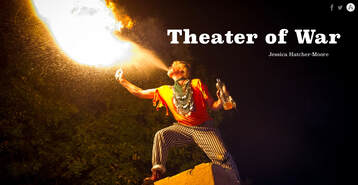
"He traveled to some of the world’s most dangerous places to disarm militias, negotiate with gangs, and defy terrorists. But Bill Brookman was just a clown."
Excitingly, Audm recorded an audio version of this story. Listen to it on Soundcloud here.
Excitingly, Audm recorded an audio version of this story. Listen to it on Soundcloud here.
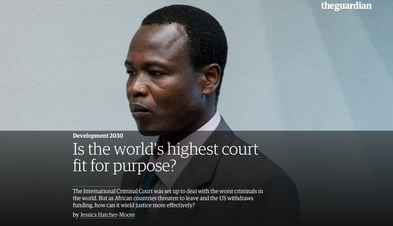
Is the world's highest court fit for purpose? Guardian, 5 April 2015
January 2017 felt like a good time to consider the ambitious dreams of the men and women who met at the end of WWII to pledge, 'never again', and to establish the United Nations in the name of the 60 million men and women lost to war in three decades. President Trump was lambasting the U.N. and threatening to pull billions in funding. Rising nationalism in Europe added to the challenge of upholding rights and a belief in the post-war world order. A number of bombastic African leaders had quit the ICC, the world's war crimes court that UN member states conceived and delivered, and were attempting to lead a mass walk-out. The court's failures were writ large for the world to see while its successes were buried in academic papers and press releases. I delved into one particular case at the ICC, that of child soldier turned rebel leader, Dominic Ongwen, and used it as a springboard to explore the state of international justice, with particular focus on the ICC.
January 2017 felt like a good time to consider the ambitious dreams of the men and women who met at the end of WWII to pledge, 'never again', and to establish the United Nations in the name of the 60 million men and women lost to war in three decades. President Trump was lambasting the U.N. and threatening to pull billions in funding. Rising nationalism in Europe added to the challenge of upholding rights and a belief in the post-war world order. A number of bombastic African leaders had quit the ICC, the world's war crimes court that UN member states conceived and delivered, and were attempting to lead a mass walk-out. The court's failures were writ large for the world to see while its successes were buried in academic papers and press releases. I delved into one particular case at the ICC, that of child soldier turned rebel leader, Dominic Ongwen, and used it as a springboard to explore the state of international justice, with particular focus on the ICC.
Murder in Burundi: the man who knew too much
Guardian Long Read, 15 November 2016
How the killing of three elderly nuns set the country’s leading human rights activist on a collision course with its most powerful general
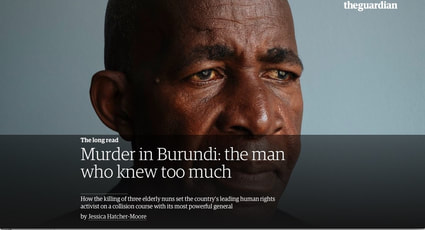
On a Sunday afternoon in early September 2014, Sister Bernadetta Boggian drove into the compound of the Catholic convent where she lived in Bujumbura, the capital of Burundi, and called out to her fellow nuns. There was no sign of the other elderly sisters who lived in the convent, so Sister Bernadetta went to find Father Mario Pulcini, the head of the mission, to ask if he had seen them. He tried phoning them, but there was no reply. So they walked across the shady compound to the nuns’ quarters, where they found the curtains drawn.
They knocked, and called out, but there was no answer. The priest was about to force open the door, but Sister Bernadetta walked around to a side entrance, which was unlocked. Inside she found a horrific scene. Sister Olga Raschietti was lying dead in her bedroom, blood pooling around her head. In the bedroom next door lay the body of Sister Lucia Pulici. Both women had been stabbed, and their throats slit.Sister Lucia would have celebrated her 76th birthday the next day. Sister Olga was 82. Together, these three elderly friends had worked for almost 50 years in South Kivu, an eastern province of the Democratic Republic of Congo that was at the centre of a series of conflicts sometimes known collectively as the Great African War, the deadliest in the continent’s modern history. When the three sisters finally left South Kivu for Burundi, they were looking forward to a more peaceful retirement posting.
Father Mario called the local police, and his superiors in Italy. Lorries and pickup trucks arrived quickly, disgorging police and soldiers, and security forces circled the compound. At around 6pm, the congregation poured out of mass in their brightly coloured Sunday best, straight into a crime scene. A papal official stood over the bodies and wept. Outside the convent, young women the sisters had taught to sew wailed with grief.
Sister Bernadetta, who remained collected throughout, accompanied the bodies to the morgue, and then returned to the convent. Father Mario wanted to find somewhere else for sister Bernadetta and the other nuns to sleep. But the sisters insisted they wanted to stay together, and sleep at the convent. As night fell, heavily armed police patrolled the compound.
When noises woke Sister Bernadetta during the night, she telephoned Father Mario, who was still awake, writing down an account of the previous day. “I think the killer is still here,” sister Bernadetta told him in a shaky voice.
The priest hurried to the nuns’ quarters, but he was too late. Sister Bernadetta was already dead. In an act of violence unimaginable to those who knew the small and wiry 79-year-old, the killer had cut off her head.
They knocked, and called out, but there was no answer. The priest was about to force open the door, but Sister Bernadetta walked around to a side entrance, which was unlocked. Inside she found a horrific scene. Sister Olga Raschietti was lying dead in her bedroom, blood pooling around her head. In the bedroom next door lay the body of Sister Lucia Pulici. Both women had been stabbed, and their throats slit.Sister Lucia would have celebrated her 76th birthday the next day. Sister Olga was 82. Together, these three elderly friends had worked for almost 50 years in South Kivu, an eastern province of the Democratic Republic of Congo that was at the centre of a series of conflicts sometimes known collectively as the Great African War, the deadliest in the continent’s modern history. When the three sisters finally left South Kivu for Burundi, they were looking forward to a more peaceful retirement posting.
Father Mario called the local police, and his superiors in Italy. Lorries and pickup trucks arrived quickly, disgorging police and soldiers, and security forces circled the compound. At around 6pm, the congregation poured out of mass in their brightly coloured Sunday best, straight into a crime scene. A papal official stood over the bodies and wept. Outside the convent, young women the sisters had taught to sew wailed with grief.
Sister Bernadetta, who remained collected throughout, accompanied the bodies to the morgue, and then returned to the convent. Father Mario wanted to find somewhere else for sister Bernadetta and the other nuns to sleep. But the sisters insisted they wanted to stay together, and sleep at the convent. As night fell, heavily armed police patrolled the compound.
When noises woke Sister Bernadetta during the night, she telephoned Father Mario, who was still awake, writing down an account of the previous day. “I think the killer is still here,” sister Bernadetta told him in a shaky voice.
The priest hurried to the nuns’ quarters, but he was too late. Sister Bernadetta was already dead. In an act of violence unimaginable to those who knew the small and wiry 79-year-old, the killer had cut off her head.
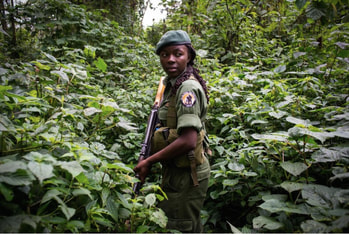
Meet the First Female Rangers to Guard one of the World's Deadliest Parks
National Geographic, 14 October 2015 - Rumangabo, DR Congo
Women have joined the paramilitary organization tasked with defending some of the last mountain gorillas in the wild.
African buffaloes are notoriously aggressive and known to kill people. So when wildlife ranger Aline Masika Kisamya Kisamya came face-to-face with one in the dense forest here, she froze.
And then calmly, quietly, she began to retreat without turning her back. She wasn’t afraid, the 26-year old says: “This is what I’ve been taught to do.”
Virunga National Park, in the eastern part of the Democratic Republic of Congo (DRC), is the most diverse in Africa. Its 3,000 square miles (7,800 square kilometers) embrace forests, snowfields, savanna grasslands, and volcanoes active and dormant.
With photography by Monique Jaques.
National Geographic, 14 October 2015 - Rumangabo, DR Congo
Women have joined the paramilitary organization tasked with defending some of the last mountain gorillas in the wild.
African buffaloes are notoriously aggressive and known to kill people. So when wildlife ranger Aline Masika Kisamya Kisamya came face-to-face with one in the dense forest here, she froze.
And then calmly, quietly, she began to retreat without turning her back. She wasn’t afraid, the 26-year old says: “This is what I’ve been taught to do.”
Virunga National Park, in the eastern part of the Democratic Republic of Congo (DRC), is the most diverse in Africa. Its 3,000 square miles (7,800 square kilometers) embrace forests, snowfields, savanna grasslands, and volcanoes active and dormant.
With photography by Monique Jaques.
Bittersweet: Stevia is both saviour and target
|
Before he died, Epitace Bayaganakandi’s dream was to see stevia, a natural plant-based sweetener, transform the lives of poor farmers in his home country. The new darling of diet drinks, stevia was already in use in products such as Coca-Cola Life, and had been projected to take over 30 percent of the $84 billion dietary sweetener industry. The way Bayaganakandi saw it, the “miracle plant” could be an economic silver bullet.
Burundi is a tiny, landlocked country in the Great Lakes region of central Africa where the math simply doesn’t add up: there are too many people and not enough land or economic opportunities to support them all. Last year, the country’s 10 million-person population expanded at a rate of over three percent, giving it among the most rapidly increasing population densities in the world. Ninety percent of Burundians rely on agriculture, but food security is a significant problem. The country has the world’s highest levels of hunger — over half of the population is chronically malnourished. While the West is trying to cut down on calorie intake, the average Burundian gets just three quarters of their recommended daily amount. With 90% of export earnings coming from coffee and tea, what was needed, Bayaganakandi thought, was a new crop to diversify people’s income streams. What he might not have expected was that the plant would become a target of politically motivated attacks. |
Burundi's radio silence - Al Jazeera America
|
'The African Queen' WWI warship ferrying Burundian refugees - Al Jazeera - 25 May 2015Amid a deadly cholera outbreak in an isolated village, century-old vessel is ferrying out sick and desperate people.It was a gamble any mother would have made. Jobless, Vanessa Nyitsagama was already struggling to feed her two children, but then news of an outbreak of violence came.
Killings had started in Burundi's capital Bujumbura after protests opposing President Pierre Nkurunziza's decision to run for a third term in office were met with a heavy-handed state-security response. Where Nyitsagama lived in Nyanza, a town close to the eastern shore of Lake Tanganyika, police were becoming edgy. Armed with Kalashnikovs they manned roadblocks, wanting to see papers and sometimes to solicit bribes. Nyitsagama's gamble was to leave home with nothing but her children and walk across the border into northwestern Tanzania, a far larger and more stable country. That way, Nyitsagama reasoned, she might secure a better life for them. With five-year-old Dinase at her side and her infant strapped to her back, she set off on foot, hugging the lake shore until she made it across the border into the usually sleepy fishing village of Kagunga in Tanzania. Nyitsagama's gamble did not pay off, however. |
"Only the people control the country right now" - Burundi 14 May 2015 - Foreign Policy
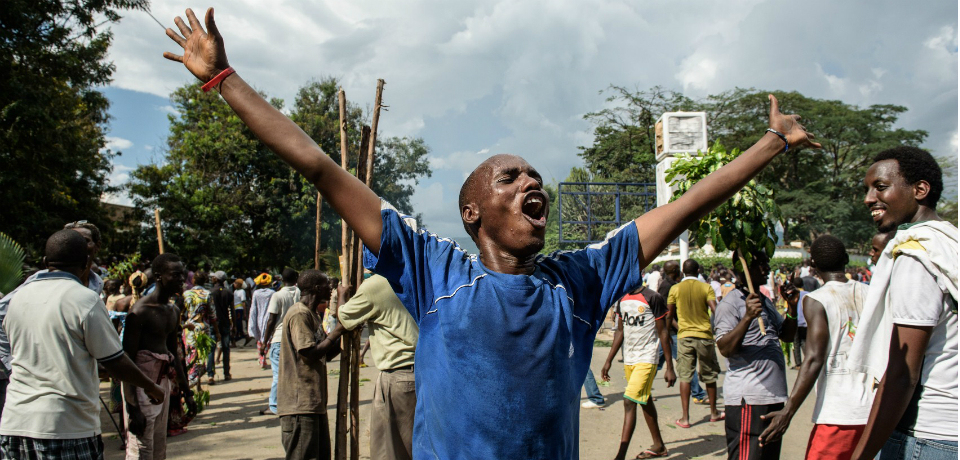
As protesters rejoice the toppling of Burundi’s president, prospects for peace in the restive country remain very much uncertain.
Thousands of people stormed the streets, blowing whistles and screaming into megaphones, as the news spread across Burundi’s capital city of Bujumbura. Just hours after President Pierre Nkurunziza left the country to attend a meeting of East African leaders in Tanzania on May 13, Maj. Gen. Godefroid Niyombare announced that the president’s time in office had come to an abrupt end.
“President Nkurunziza is dismissed,” General Niyombare said around lunchtime on Wednesday, surrounded by several senior police and army officials, including a former defense minister. “His government is dismissed too.”
Thousands of people stormed the streets, blowing whistles and screaming into megaphones, as the news spread across Burundi’s capital city of Bujumbura. Just hours after President Pierre Nkurunziza left the country to attend a meeting of East African leaders in Tanzania on May 13, Maj. Gen. Godefroid Niyombare announced that the president’s time in office had come to an abrupt end.
“President Nkurunziza is dismissed,” General Niyombare said around lunchtime on Wednesday, surrounded by several senior police and army officials, including a former defense minister. “His government is dismissed too.”
Exploiting Turkana: Robbing the Cradle of Mankind Newsweek Insights - 24 November 2014
|
My ebook about Turkana, an arid region in the north of Kenya where you and I are believed to have evolved. Scientists believe that every human being alive today is related to a community that once lived around the northern end of Lake Turkana where the borders of Kenya and Ethiopia meet. Now, the same land that nurtured human life has also been found to bear oil. It's available on Amazon for Kindle, iBook, etc. 'Book' is perhaps over-selling it, but it is a *small* book of 63 pages, according to Amazon. And for those who are more of the TL;DR (too long, didn't read, in Twitter speak) ilk, there's a cut down version that was published in Newsweek magazine. I'm very grateful to the Pulitzer Center on Crisis Reporting for supporting this story with a reporting grant that covered all the hard costs. |
Could ski-lifts break the gridlock in African cities?
Probably not, but it's worth a shot. New Statesman - 23 October 2014

For a demographic that is growing, urban Africans spend a lot of time sitting still. In Nairobi, Kenyan motorists spend hours a day in their cars; a standard seven-mile commute can take up to two hours. One driver I know uses his time stuck in traffic to cut his toenails. Miles-long queues are good for hawkers and for the thieves who prey on drivers distracted by their phones but the deputy governor of Nairobi estimates that traffic jams cost Kenya’s economy almost $600,000 per day.
The story is similar in almost any fast-expanding city in the developing world: construction is booming and populations are growing but transport systems are struggling to keep up. We are undergoing the fastest urban growth in history. More than half the world’s population lives in cities and that proportion is rising. The UN Population Fund estimates that the greatest urban growth will be in Asia and Africa, particularly in smaller towns and cities with fewer resources to respond to change. These cities will have no space for extensive road and overland rail systems and no money to build underground railways, which can cost between £150m and £300m per mile.
Now think of ski lifts, a symbol of Alpine decadence, but imagine them soaring over a city such as Nairobi or Johannesburg. These cable cars would be built not just for tourists but for everyone, from bankers and cleaners to gardeners and jobless slum-dwellers, venturing into the wealthier side of town.
Read the full story here.
The story is similar in almost any fast-expanding city in the developing world: construction is booming and populations are growing but transport systems are struggling to keep up. We are undergoing the fastest urban growth in history. More than half the world’s population lives in cities and that proportion is rising. The UN Population Fund estimates that the greatest urban growth will be in Asia and Africa, particularly in smaller towns and cities with fewer resources to respond to change. These cities will have no space for extensive road and overland rail systems and no money to build underground railways, which can cost between £150m and £300m per mile.
Now think of ski lifts, a symbol of Alpine decadence, but imagine them soaring over a city such as Nairobi or Johannesburg. These cable cars would be built not just for tourists but for everyone, from bankers and cleaners to gardeners and jobless slum-dwellers, venturing into the wealthier side of town.
Read the full story here.
The first app to win a war?
New Statesman - 10 April 2014
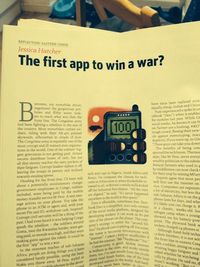
Bienvenu, my motorbike driver, negotiated the gargantuan potholes and filthy water tankers to reach what was then the front line. The Congolese army had been fighting a rebellion in the east of the country. Most motorbikes carried soldiers, riding with their AK-47s pointed skywards, silhouetted in clouds of dust. The Congolese army is reputedly one of the most corrupt and ill-trained state organisations in the world. One of the soldiers’ biggest grievances is not getting paid. Armed escorts distribute boxes of cash, but not all that money reaches the tatty pockets of their fatigues. Corrupt leaders siphon it off, leaving the troops in penury and inclined towards stealing sprees.
Heading for the front line, I’d been told about a potentially revolutionary change: government employees in Congo, soldiers included, were being paid by the mobile money transfer service M-Pesa. A text message arrives on your phone. You take the phone to an ATM or agent and, with your secret Pin and ID, withdraw cash. Inspired! Corrupt civil servants will be a thing of the past. I had even heard it was helping Congo quash the rebellion – the soldiers around Goma, near the Rwandan border, were getting paid, so morale was high, and they were making gains against the rebels. It could be the first “app” to win a war.
In the remotest reaches of sub-Saharan Africa, people are doing things you’d have considered barely possible, using the basic Nokia you threw away. M-Pesa, styled as the first app for mobile phones in the developing world, has transformed business and banking since it launched in Kenya in 2007. It achieved the holy grail of app-making by doing one thing that everyone needs. Within five years of its launch, 70 per cent of Kenya’s adult population had signed up.
Heading for the front line, I’d been told about a potentially revolutionary change: government employees in Congo, soldiers included, were being paid by the mobile money transfer service M-Pesa. A text message arrives on your phone. You take the phone to an ATM or agent and, with your secret Pin and ID, withdraw cash. Inspired! Corrupt civil servants will be a thing of the past. I had even heard it was helping Congo quash the rebellion – the soldiers around Goma, near the Rwandan border, were getting paid, so morale was high, and they were making gains against the rebels. It could be the first “app” to win a war.
In the remotest reaches of sub-Saharan Africa, people are doing things you’d have considered barely possible, using the basic Nokia you threw away. M-Pesa, styled as the first app for mobile phones in the developing world, has transformed business and banking since it launched in Kenya in 2007. It achieved the holy grail of app-making by doing one thing that everyone needs. Within five years of its launch, 70 per cent of Kenya’s adult population had signed up.
South Sudan's frontline nuns - Al Jazeera - 26 March 2014
Nuns in South Sudan know a thing or two about war. "We learned fast with the bullets whistling past our ears," said Sister Barbara Paleczny, chuckling at the memory of her younger self when she moved here five years ago.
Paleczny, 70, a teacher with the Rome-based NGO Solidarity with South Sudan, has lived in the United States, United Kingdom, and Canada. But it's the city of Malakal - where civil war has raged in recent months - that she calls home.
Malakal, an oil town on the banks of the White Nile, has changed hands between the government and rebel forces several times since December, according to the missionaries who are there. Each attack and counterattack has led to fresh atrocities, which the nuns have done their best to prevent. The sisters have confronted military chiefs about rape, negotiated for civilian protection amid rocket-propelled grenade fire, and held their ground when international humanitarians and peacekeepers left.
South Sudan's frontline nuns - mostly Europeans and Americans - can dig a foxhole and distinguish a loaded Antonov bomber from an unloaded one based on its engine noise alone. They are agile, witty and plain-clothed - wearing a nun's habit in South Sudan's sultry climate wouldn't work.
You can read the full story here.
Paleczny, 70, a teacher with the Rome-based NGO Solidarity with South Sudan, has lived in the United States, United Kingdom, and Canada. But it's the city of Malakal - where civil war has raged in recent months - that she calls home.
Malakal, an oil town on the banks of the White Nile, has changed hands between the government and rebel forces several times since December, according to the missionaries who are there. Each attack and counterattack has led to fresh atrocities, which the nuns have done their best to prevent. The sisters have confronted military chiefs about rape, negotiated for civilian protection amid rocket-propelled grenade fire, and held their ground when international humanitarians and peacekeepers left.
South Sudan's frontline nuns - mostly Europeans and Americans - can dig a foxhole and distinguish a loaded Antonov bomber from an unloaded one based on its engine noise alone. They are agile, witty and plain-clothed - wearing a nun's habit in South Sudan's sultry climate wouldn't work.
You can read the full story here.
South Sudan unrest exacerbated by conflict among cattle herders
The Guardian - 11 March 2014
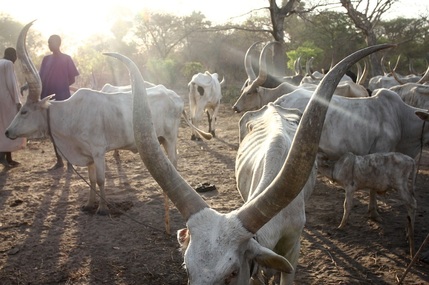
The ethnic rivalry driving South Sudan's wider political crisis is reflected in – and reinforced by – local skirmishes over cows
At 6ft 5in, James Makol towers over his prize bull. He wallops it on the rump as plumes of ash from burning dung billow skywards. The bull seems oblivious. It is surrounded by hundreds, perhaps thousands, of similarly ash-covered cows belonging to Cueibet's Dinka people.
Only one thing disturbs this tranquil scene: the intermittent crack of rifle fire. Makol, 28, has an AK-47 strapped across his back. This is the first time he has carried a weapon in years. He says the number of guns in civilian hands declined after the 2005 peace agreement that prefaced South Sudan's official split from the north two years later.
Prior to the separation of the Sudans, there were thought to be up to 3.2m small arms (pdf) in circulation, two-thirds of them in civilian hands. There have been numerous disarmament programmes (pdf) since 2000 and officials have collected tens of thousands of weapons, but the process has been hampered by inadequate state security.
Makol bought his Russian assault rifle from a travelling salesman soon after the latest round of fighting started in mid-December. It cost three cows; the average street value of a single cow is more than $600 (£360). "I heard the Nuer have rebelled and are fighting the Dinka. Now, in case of an attack, I will be ready," he says.
Locals in South Sudan's Dinka and Nuer strongholds say that the recent political crisis, which pits the ethnic groups against one another, is concealing, and at times promoting, smaller, localised conflicts over cows.
At 6ft 5in, James Makol towers over his prize bull. He wallops it on the rump as plumes of ash from burning dung billow skywards. The bull seems oblivious. It is surrounded by hundreds, perhaps thousands, of similarly ash-covered cows belonging to Cueibet's Dinka people.
Only one thing disturbs this tranquil scene: the intermittent crack of rifle fire. Makol, 28, has an AK-47 strapped across his back. This is the first time he has carried a weapon in years. He says the number of guns in civilian hands declined after the 2005 peace agreement that prefaced South Sudan's official split from the north two years later.
Prior to the separation of the Sudans, there were thought to be up to 3.2m small arms (pdf) in circulation, two-thirds of them in civilian hands. There have been numerous disarmament programmes (pdf) since 2000 and officials have collected tens of thousands of weapons, but the process has been hampered by inadequate state security.
Makol bought his Russian assault rifle from a travelling salesman soon after the latest round of fighting started in mid-December. It cost three cows; the average street value of a single cow is more than $600 (£360). "I heard the Nuer have rebelled and are fighting the Dinka. Now, in case of an attack, I will be ready," he says.
Locals in South Sudan's Dinka and Nuer strongholds say that the recent political crisis, which pits the ethnic groups against one another, is concealing, and at times promoting, smaller, localised conflicts over cows.
Congo's forgotten Curse, female-perpetrated rape
TIME - 3 December 2013
In a secure darkened room, Marie, a 36-year-old mother of six, whispers and struggles to make eye contact. A shoe trader, she regularly travels by bus to sell her wares in remote parts of the east of the Democratic Republic of Congo. Last year, her bus broke down on the often impassable forest road to the town of Walikale. Her bags were too heavy for her to continue by foot, so she resorted to a bicycle taxi. Bandits pulled her off the road while she waited for one to arrive. “When I saw women, I thought I was saved,” she recalls. Not so. The women were armed and dressed in military uniform. They argued with the men in the group over who would “have” Marie. The women won.
“They asked why I was here doing business while they were starving,” she remembers. “They told me I was fat, and that I’d stay with them in the forest until I become thin.” One started to push her fingers inside Marie. Another tried to introduce her hand. The women continued to psychologically and physically abuse Marie for four days. She was forced to imitate sexual pleasure as they assaulted her. By the fourth day she was bleeding so much that the women gave up. They wanted to kill her, but the men in the group argued with them. Finally, after nine days, the militia let her go.
Rape in conflict zones has long been the subject of news reports and academic study and large amounts of donor funding is channeled to organizations that respond to it. But rape specifically perpetrated by women has received less attention. Recent studies suggest the problem is more widespread than many experts previously believed. In 2010, Harvard academic Lynn Lawry and a team of researchers conducted a survey of human-rights abuses in over 1,000 households in conflict-ridden eastern Congo. It was the same year that Margot Wallstrom, the U.N. special representative on sexual violence in conflict, dubbed Congo “the rape capital of the world.” Lawry’s study asked victims of sexual violence to specify their assailant’s gender. It found that 40% of the women — and 10% of the men — who said they were subjected to sexual violence were assaulted by a woman.
To read more on the subject of female perpetrated violence in a conflict setting, see Dara Cohen's 2013 paper, Female Combatants and the Perpetration of Violence. And for Lawry's findings on female-perpetrated sexual violence, see here.
And here is the link to my article for TIME.
“They asked why I was here doing business while they were starving,” she remembers. “They told me I was fat, and that I’d stay with them in the forest until I become thin.” One started to push her fingers inside Marie. Another tried to introduce her hand. The women continued to psychologically and physically abuse Marie for four days. She was forced to imitate sexual pleasure as they assaulted her. By the fourth day she was bleeding so much that the women gave up. They wanted to kill her, but the men in the group argued with them. Finally, after nine days, the militia let her go.
Rape in conflict zones has long been the subject of news reports and academic study and large amounts of donor funding is channeled to organizations that respond to it. But rape specifically perpetrated by women has received less attention. Recent studies suggest the problem is more widespread than many experts previously believed. In 2010, Harvard academic Lynn Lawry and a team of researchers conducted a survey of human-rights abuses in over 1,000 households in conflict-ridden eastern Congo. It was the same year that Margot Wallstrom, the U.N. special representative on sexual violence in conflict, dubbed Congo “the rape capital of the world.” Lawry’s study asked victims of sexual violence to specify their assailant’s gender. It found that 40% of the women — and 10% of the men — who said they were subjected to sexual violence were assaulted by a woman.
To read more on the subject of female perpetrated violence in a conflict setting, see Dara Cohen's 2013 paper, Female Combatants and the Perpetration of Violence. And for Lawry's findings on female-perpetrated sexual violence, see here.
And here is the link to my article for TIME.
Kenya's Masai Mara: It will not be long before it's gone
Guardian Weekend Magazine - 23 August 2013, with photography by Guillaume Bonn
Guardian Weekend Magazine - 23 August 2013, with photography by Guillaume Bonn
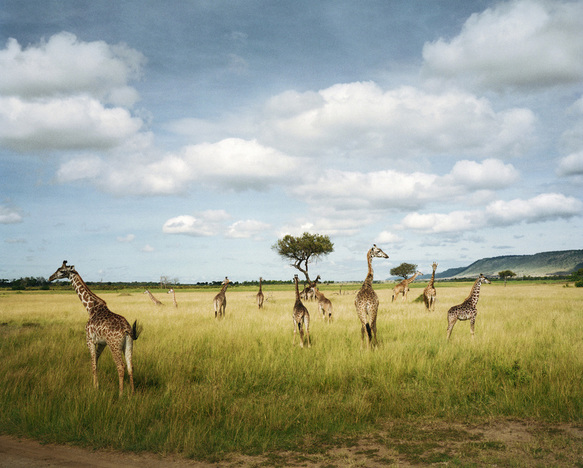
Our vehicle comes to an abrupt stop. "There, now watch," says Josphat, my exacting young Masai guide. We cut the engine and the silence is acute. Josphat points out a cheetah's head in an ocean of golden grass. One minibus has already pulled up on another sandy track a few hundred metres away and four heads are craning out of the roof. We sit and watch for the cheetah. All of a sudden white minibuses crest the horizon in droves. We are in a stampede. Eight of them surround us. Within five minutes we have counted 30, the drivers communicating via radio to make sure their clients tick off "the big five". A cheetah will never kill like this; its prey will have been alerted. And if it has killed, the vehicles will make it blind to a subsequent hyena attack. But this cheetah is now nowhere to be seen. Undeterred, the minibus drivers start ploughing into the long grass. Eventually they give up. I ask if this happens often. Every day, Josphat says.
I also recorded and edited interviews for an audio slideshow to accompany Guillaume Bonn's images.
I also recorded and edited interviews for an audio slideshow to accompany Guillaume Bonn's images.
Goma, DR Congo: UN gears up to deploy a offensive combat force in DRC
Guardian - 1 August 2013
Civilians have been attacked near Monusco bases, but the UN peacekeeping force now has a mandate to fight back
|
Even in the remotest reaches of North Kivu, where roads do not go, you will find children with whom you have at least two words in common: "Monuc", the original name of the UN peacekeeping force, and "biscuit", thanks to their misguided attempt to ingratiate themselves by distributing baked goods among people in the Democratic Republic of the Congo. Now called Monusco, the force is highly visible but largely ineffectual, locals say.
"They do not do anything," says a doctor in his office in Goma, the provincial capital. The national army, FARDC, is fighting the M23 rebel group on the outskirts of the city. Behind rebel lines, a catalogue of abuse has taken place in recent months, including rape, forced recruitment and summary executions. "The primary mission of 17,000 soldiers in this country is to protect civilians and they've done nothing so far. The UN forces are on a sightseeing mission," said the doctor, who spoke on condition of anonymity. Things may be about to change. The UN is deploying an offensive combat forcefor the first time in an attempt to neutralise eastern Congo's myriad armed groups. In March, Monusco adopted resolution 2098, which enabled offensive combat and authorised an "intervention brigade". The brigade will comprise 3,000 troops from Tanzania, Malawi and South Africa. Approximately 70% have arrived in Goma so far. |
The White Stuff: Mining Giant Rio Tinto Unearths Unrest in Madagascar
|
|
Congo's mamas battle wartime rape
TIME, 30th November 2012 Jeanette Bindu’s network in eastern Democratic Republic of Congo has just informed her of a mass rape in Minova — more than 100 women within just four days. Thousands of government troops have fled the provincial capital of Goma in the face of an advance by the M23 rebels, and on Nov. 22 the government soldiers arrived on the small town of Minova, 54 km to the west. The rapes started immediately. Bindu, who runs a network of 36 women monitoring rape across the region, wants to know more. So taking a TIME reporter with her, she jumps in her car, navigates the 54 km of barely paved roads and checkpoints manned by drunken militiamen to reach Minova. “Every time, it’s the women that these conflicts affect the most,” she says." |
Defining Peacekeeping Downward - TIME, 26th November 2012
|
How cocaine transformed a tiny narco-state
|
It took a Bissau-Guinean man who had been recently deported from Europe, known now by local legend simply as the Boy from Biombo, to realize exactly what the powder was: cocaine. Seeing calabashes filled with the stuff, he began buying it up for a few dollars a kilo and shipping it to the capital, Bissau. When one of the villagers, Joy, telephoned Guinea-Bissau’s City FM radio station, told them the story of the sacks of powder and asked them to contact the vegetable department at the Ministry of Agriculture on her behalf, a group of Nigerians arrived in Biombo and set about buying up whatever of the substance remained. By then, the Boy from Biombo was well on the way to establishing a small business empire. It was only after several months that the penny finally dropped for the police and the villagers. There were living in the middle of a new drug-trafficking highway running between Latin America and Europe."
|
Has Guinea Bissau become a narco-state? Interview with a coup-leader
|
Katoyi, DR Congo: Sleeping through Slaughter - feature - VICE Magazine, 7 August 2012A personalised account of a four-day massacre investigation mission in Masisi district, eastern DR Congo
|
Mogadishu, Somalia: From burkas to tracksuits - feature - IRIN Global, 18 April 2012The Somali Athletics Federation will select one female runner from a field of 10 to compete in the 400-metres at this year's London Olympics. The youngest of those currently training in Mogadishu is Najma, 10. She started running six months ago, shortly after Al-Shabab left the city. “My father encouraged me,” said Najma.
She knows she is lucky - most girls in Somalia do not enjoy such freedom. The head coach of the Athletics Federation, Ahmed Ali Abikar, said it is very difficult for female athletes in Mogadishu to train. "Society doesn't understand about sport for girls. They cannot train everywhere, they are teased. But they know why they're doing it," he said. ics. |
Nairobi, Kenya: Coca-Cola saving lives - news - IRIN Global, 2 March 2012How is it that the world's most popular fizzy drink reaches even the farthest-flung corners of the planet, yet vast numbers of children in developing countries die for lack of one of the cheapest and most effective preparations known to medical science?
The world's second-biggest cause of child mortality, diarrhoea, kills about 1.5 million children every year. Three-quarters of these deaths could be prevented with a simple course of oral rehydration salts (ORS) combined with zinc tablets, at a cost of just US$0.50 per patient. Yet, despite being heavily promoted by the World Health Organization since the 1970s, fewer than 40 percent of child diarrhoea cases in developing countries are treated with ORS. That figure falls below 1 percent when the treatment includes zinc, which reduces not only the duration and severity of diarrhoeal episodes but also the likelihood of subsequent infections. |
Deadly Trade – Telegraph Magazine, 10 December 2011Where is all this rhino horn going, and why does it supposedly sell at £40,000 per kilogram, more than gold? Is China to blame? The questions wildlife conservationists in Africa have been asking since poaching entered a new and deadly era after the turn of the century, threatening to wipe out Africa's large mammals. I joined a group of some of China's wealthiest opinion-leaders with their friends and family on safari in Kenya to find out.
|
